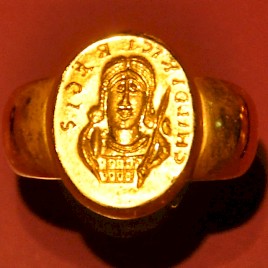Merovingians
Q59488Merovingians: first dynasty of the Frankish kingdom in Early Medieval Gaul.

The Merovingian kingdom was created by a man named Childeric, governor of the Roman province of Belgica Secunda, who benefited from the demise of the Roman administrative system in Gaul in the third quarter of the fifth century and created a kingdom for himself. His rule is traditionally dated to 457-481. He was succeeded by his son Chlodovech ("Clovis"), who conquered most of France and expanded his power to the east, along the Rhine. His reign is usually dated to 481-511, although the Book of Popes, the official collection of papal biographies, reports that the king was still in the land of the living in the year 513.
Although the Merovingians were of Frankish descent, their state was essentially a continuation of the Roman Empire. The cities were still important, Latin remained the language of administration, the kings were Christian, taxes were still collected, and for quite some time the emperor's portrait was on the coins minted in Gaul.
After the death of Chlodovech, his kingdom was divided by his sons Theuderic (Reims), Chlodomer (Orléans), Childebert (Paris), and Clotharius (Soissons), but the dynasty remained together and for every division we see a reuniting. A crisis in the early seventh century, however, brought important changes: the aristocrats received more rights and the king had to appoint a "mayor of the palace", who was to become increasingly important. In the eighth century, mayor Charles Martel would unite the kingdoms; in 751, his son Pepin would become king himself. His dynasty is called Carolingian.
One of the main sources for Merovingian history is the History of the Franks by Gregory, bishop of Tours. Written at the end of the sixth century, it presents the Merovingian state as Frankish, an element that had until then not been very pronounced.